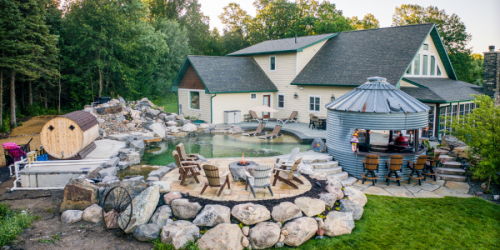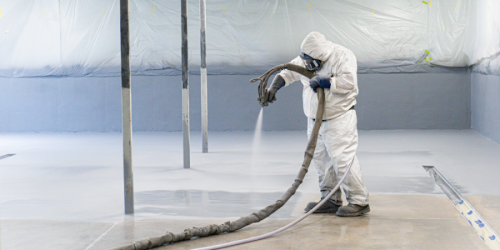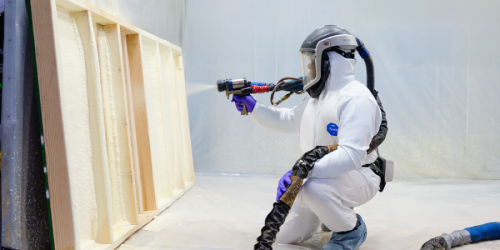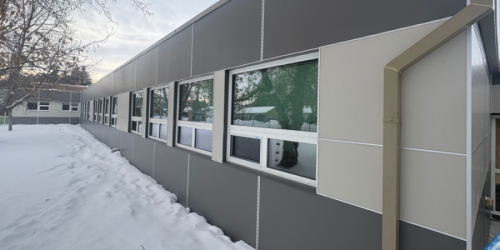Q&A Forums
Cellulose as an ignition barrier? Post New Topic | Post Reply
| Author | Comments |
|---|---|
|
Dave Strnad
Posted: Oct 20, 2007 08:11 PM
|
Cellulose as an ignition barrier?
Mason,Could you clarify whether or not cellulose is an accepted ignition barrier? Thank You |
|
mason
Posted: Oct 21, 2007 09:58 AM
|
There are fire rated cellulose products that have been tested and are listed as thermal barriers and as such can be installed in attics in lieu of ignition barriers. Be sure the fire ratings are current for the product. |
|
Dave Strnad
Posted: Oct 21, 2007 07:07 PM
|
So what exactly are you saying? I am reading it as Cellulose is not an ignition barrier. So you have to use an approved cellulose thermal barrier such as K13 or comparable. Is This correct, which did you use? |
|
mason
Posted: Oct 22, 2007 10:42 AM
|
Yes, I used a fire rated cellulose, I believe it was K 13 |
|
mason
Posted: Oct 22, 2007 10:42 AM
|
Yes, I used a fire rated cellulose, I believe it was K 13 |
|
Dave Strnad
Posted: Oct 26, 2007 04:43 PM
|
Mason, Not to beat a dead horse here, but I came across a document from my cellulose manufacturer that to me sounds like 3.5 inches of cellulose is a 15 min barrier. I will try to copy it below. I really just want to make sure that I get this right, like you said for liability, but also to be competitive. Am I reading this right, is 3.5 inches of cellulose a 15 min barrier? www.regalind.com (IBC) CALCULATED FIRE RATINGS OF BUILDING COMPONENTS The International Building Code (IBC) has a section on Calculated Fire Ratings of Building Components: Table 721.6.2 (1), & (2), & (5) of IBC lists the following “fire rated” values: Regular ½ inch gypsum provides………………………15 minutes ½ inch type x gypsum provides…………………………25 minutes Double regular ½ inch gypsum provides………………40 minutes 5/8 inch type x gypsum provides…………………….….40 minutes 2 x 4 wood studs on 16 inch centers provides……….…20 minutes 3 ½ inches of cellulose insulation provides……………..15 minutes The premise of the IBC is that one can add individual component values to arrive at the fire rating for an assembly. Comparing the above IBC values, 2 x 4 wood studs have a higher rating than cellulose when cellulose insulation is composed of required chemicals making it flame retardant. The National Research Council Canada (NRC) did a test (Assembly # S-08) using an assembly built with 2x4 wood studs on 16 inch centers with a single layer of ½ inch type x gypsum on both sides. Their test resulted in a fire rating of 47 minutes. Using the above IBC values, the same assembly would give a fire rating of 70 minutes (25 x 2 + 20 = 70). This is a difference of 33 %. Also, Omega Point Laboratories Project #16094-105450 achieved a 56 minute fire rating using an assembly built with 2x4 wood studs on 24-inch centers with a single layer of 5/8 inch type x gypsum on both sides. Using the same and/or similar dimensions, the above IBC values would add up to 100 minutes (40 x 2 + 20 = 100). The IBC does not give a value for 24 inch o.c. so 16-inch o.c. was used in this comparison, with the difference being 44 %. In comparing these two examples a conclusion can be drawn that the above IBC fire rating values for gypsum/wood stud components are too high! Assuming one can do a ratio, 16/24 x 20 = 13 minutes for the wood studs and 56 – 13 = 43 / 2 (each side) = 22 minutes for each layer of 5/8 inch drywall. The same assembly tested with wet spray cellulose by Omega Point Lab gave an 84 to 94 minute fire rating. So it appears the 3-½ inch of wet spray cellulose insulation added 28 to 38 minutes of additional fire rating to the assembly. One can conclude that the above IBC value for cellulose insulation is too low! Additionally, NRC did another test (Assembly # S-09) consisting of ½ inch type x gypsum on both sides of a 2 x 4 steel stud on 24-inch centers without any insulation and got a 46 minute fire rating. Using fiberglass they recorded the same 46-minute fire rating. Using dry blown cellulose insulation they recorded 69 minutes. That’s 23 more minutes of fire protection with cellulose. Again, the conclusion is that the IBC’s value placed on cellulose insulation is too low. SL Regal 08-07 |
|
mason
Posted: Oct 28, 2007 09:29 AM
|
Dave, So long as the cellulose (or any product) is rated for a 15 minute thermal barrier rating or higher it can be used over foam plastic in the interior of buildings. |





























